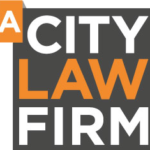
As an employer you have the same responsibilities for ensuring the health and safety of home workers as you would for staff based at your premises.
Employers have a legal duty to protect the health, safety and welfare of their employees, including homeworkers.
Under the Management of Health and Safety at Work Regulations 1999, employers are required to carry out a risk assessment of the work activities carried out by homeworkers. This involves identifying the hazards relating to the homeworkers’ work activities and deciding whether enough steps have been taken to prevent harm to them or to anyone else who may be affected by their work.
Specifically this includes:
- Identifying any hazards – it may be necessary to actually visit the employee at their home to carry out the risk assessment, although the homeworkers themselves can identify any risks for the employer;
- Deciding who might get harmed and how – this may include the homeworker, family members and visitors;
- Assessing the risk and take appropriate action – the necessary action will depend on the level of risk involved. For example, loose wires from office equipment could be tucked away under a desk or table to prevent any children from tripping over them. Of course if there are no risks present then no action needs to be taken;
- Recording findings – Employers who have five or more employees, including homeworkers, are required by law to record any significant findings. This includes noting what steps have to be taken and informing the homeworker;
- Checking the risks from time to time and take further steps if needed.
If, as an employer, you have provided the homeworker with office equipment to carry out work then you have a duty to ensure that:
- The equipment is correct for the job that is being done;
- Proper information and training is given on how to use the equipment;
- The equipment being used is checked regularly and kept in a condition that does not cause harm to the homeworker or others;
- Those people who are testing the equipment or training the homeworker are properly trained themselves so that they provide the correct information and training;
- The machine being used has protective equipment;
- The necessary personal protective equipment is provided for using the work equipment safely;
- Equipment has the right controls to allow the work to be carried out safely; and
- Checks on equipment are carried out safely.
If homeworkers use electrical equipment provided by the employer as part of their work, the employer is responsible for its maintenance. As an employer, you are only responsible for the equipment you supply. Electrical sockets and other parts of the homeworkers’ domestic electrical system are their own responsibility.
Some simple steps that can be taken by an employer include:
- Ensure electrical equipment is turned off before it is checked;
- Check the plugs are not damaged;
- Check the domestic electrical systems are adequate for the equipment;
- Check the plugs are correctly wired;
- Check that the outer part of the equipment is not damaged; and
- Check that are no trailing/lose wires or any other damage.
For more information contact us…
0207 426 0382
enquiries@acitylawfirm.com
” ”

